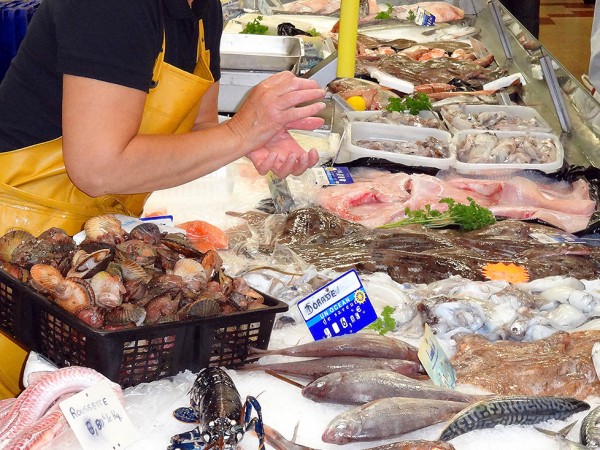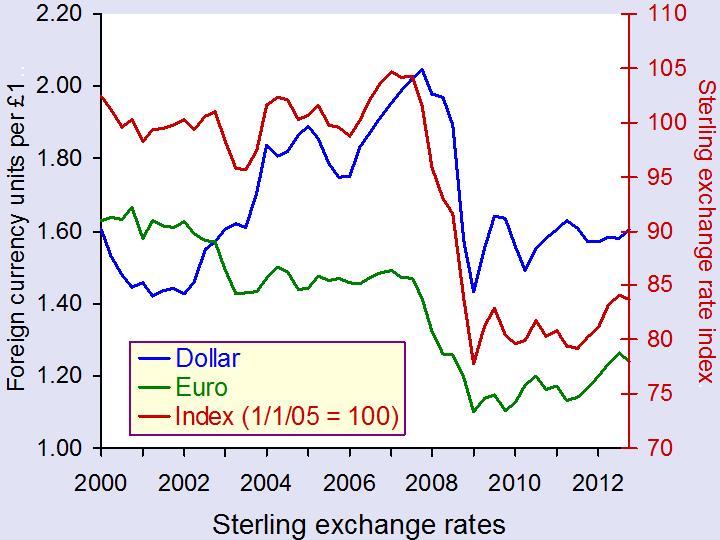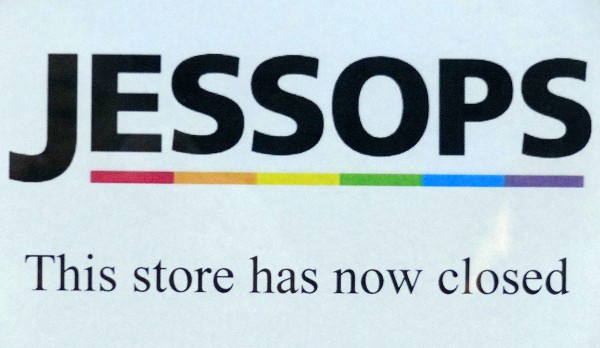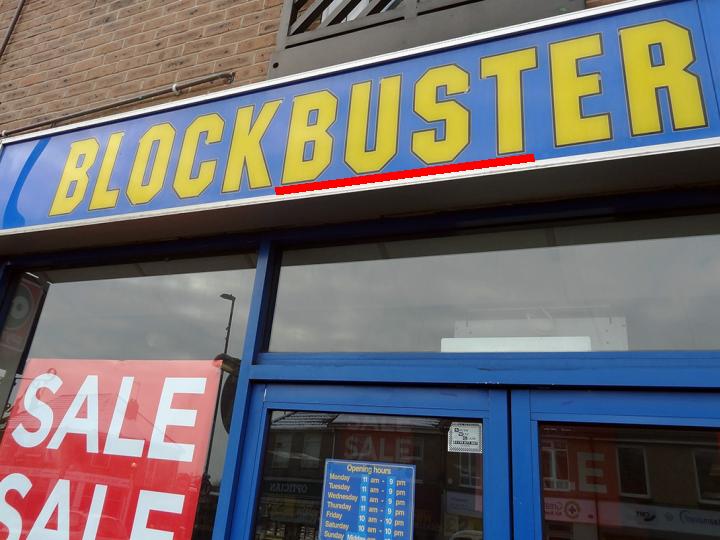 It’s a relatively common dish to see on a menu at a restaurant: mackerel. This particular fish has been promoted as a healthy and sustainable dish, but now its sustainability is coming into question and the Marine Conservation Society has taken it off its ‘fish to eat’ list. My brother Hugh is a marine biologist and often comments on which fish we should be avoiding due to sustainability issues (especially given how much I like fish!) So, how is this an economics issue?
It’s a relatively common dish to see on a menu at a restaurant: mackerel. This particular fish has been promoted as a healthy and sustainable dish, but now its sustainability is coming into question and the Marine Conservation Society has taken it off its ‘fish to eat’ list. My brother Hugh is a marine biologist and often comments on which fish we should be avoiding due to sustainability issues (especially given how much I like fish!) So, how is this an economics issue?
There a couple of key things to pick out here. Firstly, with the conservationists’ warning of this issue of unsustainability, they have been asking consumers to reduce the amount of mackerel they buy. This will naturally have an impact on fisherman. If consumers do listen to the conservationists and hence reduce their demand for mackerel, we could see a fall in the price of this fish and a reduction in the fishermen’s turnover. It could be that we see a switch in consumption to other more sustainable fish, especially if we see some form of intervention.
 Another area concerning economics is the idea of over-fishing. For years, there have been disputes over who has the rights to these fish stocks. In the past, the Faroe Isles and Iceland have increased their quotas significantly, as mackerel appear to have migrated to their shores, contributing to this question of sustainability. Iceland and the Faroe Isles have ‘unilaterally agreed their quotas … as they are not governed by the common fisheries policy’.
Another area concerning economics is the idea of over-fishing. For years, there have been disputes over who has the rights to these fish stocks. In the past, the Faroe Isles and Iceland have increased their quotas significantly, as mackerel appear to have migrated to their shores, contributing to this question of sustainability. Iceland and the Faroe Isles have ‘unilaterally agreed their quotas … as they are not governed by the common fisheries policy’.
The question is: when fisherman catch one additional mackerel, what are they considering? Do they think about the private benefit to them (or their company) or do they consider the external cost imposed on others? Whenever one fish is taken from the sea, there is one less fish available for other fishermen.
 This leads to over-consumption of fish and contributes towards the well-documented depletion of fish stocks and ‘The Tragedy of the Commons’, if account is not taken of the external cost imposed on other fishermen.
This leads to over-consumption of fish and contributes towards the well-documented depletion of fish stocks and ‘The Tragedy of the Commons’, if account is not taken of the external cost imposed on other fishermen.
The total catch is now far in excess of what has been scientifically recommended and previously agreed upon by all participating countries. Negotiations to introduce new catch allowances have so far failed to reach agreement.
There are hopes that an international policy on quotas can be agreed to ensure mackerel levels return to or remain at a sustainable level. However, at present no progress has been made. Until some form of an agreement is reached, fishermen around Iceland and the Faroe Isles will continue to battle against the conservationists. The following articles consider this fishy topic.
Mackerel taken off conservationists’ ‘fish-to-eat’ list The Guardian, Rebecca Smithers (22/1/13)
Warning over mackerel stocks Scottish Herald (22/1/13)
Fishing quota talks begin amid ongoing disputes and finger-pointing The Scotsman, Fran Urquhart (14/1/13)
Mackerel no longer an ethical choice because of over-fishing The Telegraph, Louise Gray (22/1/13)
Ths fishy tale of macro-mismanagement The Guardian, Annalisa Barbieri (22/1/13)
You can still eat mackerel – just make sure it’s British The Telegraph, Louise Gray (22/1/13)
Dispute means mackerel is no longer fish of the day BBC News, Matt McGrath (22/1/13)
Mackerel struck off sustainable fish list Associated Press (22/1/13)
Questions
- Why are quotas set by the EU for fishing? Who do they apply to?
- Why is there an externality from fishing?
- What is the Tragedy of the Commons? Using a diagram with average and marginal revenue product and average and marginal cost illustrate the market equilibrium and the social optimum. Why are they different?
- Following on from question 3, what does this suggest about the role of governments?
- If the conservationists’ request regarding buying less mackerel is successful, what impact might this have on fishermen and fisheries?
- If consumers do switch to buying other fish, what would happen to the equilibrium in the mackerel market and in the market for other fish? Think about this question in terms of general equilibrium analysis.
 Market trading has existed for centuries and in many respects it hasn’t changed very much. One thing that has developed is the means of exchange. Goods used to be traded for other goods – for example 1 pig for 4 chickens! But then money was developed as a means of exchange and then came cheques and plastic.
Market trading has existed for centuries and in many respects it hasn’t changed very much. One thing that has developed is the means of exchange. Goods used to be traded for other goods – for example 1 pig for 4 chickens! But then money was developed as a means of exchange and then came cheques and plastic.
However, for many market traders, accepting credit and debit cards is relatively costly. It involves paying a monthly contract, which for many traders is simply not worthwhile, based on the quantity and value of the transactions. But, for many customers using debit or credit cards is the preferred method of payment and the fact that some traders only accept cash can be a deterrent to them making purchases and this therefore reduces the sales of the market traders.
 But, with advances in technology a new way of paying has emerged. Small card readers can now be plugged into iphones, ipads, other tablets and smartphones. By putting a customer’s card into this device customers can then pay by card and either sign for their purchase or use the phone to enter their security details. There are plan for these companies to offer chip and pin technology to further ease payment by card on market stalls. The traders pay a small commission per transaction, but aside from that, the initial start-up cost is minimal and it is likely to encourage more customers to use markets. Jim Stewart, the Director of a firm that has begun using this technology said:
But, with advances in technology a new way of paying has emerged. Small card readers can now be plugged into iphones, ipads, other tablets and smartphones. By putting a customer’s card into this device customers can then pay by card and either sign for their purchase or use the phone to enter their security details. There are plan for these companies to offer chip and pin technology to further ease payment by card on market stalls. The traders pay a small commission per transaction, but aside from that, the initial start-up cost is minimal and it is likely to encourage more customers to use markets. Jim Stewart, the Director of a firm that has begun using this technology said:
I think it’s definitely going to take off, the world is going that way … The money has always appeared in my bank account, no transactions have been declined, my accountant is happy, it’s all been good.
Some customers have raised concerns about the security of these transactions, as they have to put their cards into someone else’s ipad. However, traders have said that there are no risks and that customers can be sent a receipt for their purchase. The following few articles look at this latest (and other) technological developments.
Smartphone card payment system seeks small firms BBC News, Rob Howard (19/1/13)
POS Trends: What’s new for 2013 Resource News (17/1/13)
Payments by text message service to launch in UK in Spring 2014 BBC News (15/1/13)
Questions
- What are fixed cost and why does having a traditional card payment machine represent a fixed cost for a firm?
- How might this new technology affect a firm’s sales and profits?
- Will there be an increase in the firm’s variable costs from adopting this technology?
- Using a cost and revenue diagram, put your answers to questions 1 – 3 into practice and show how it will shift them and thus how the equilibrium may change for a market trader.
- What are the properties of money that allow it to be a good medium of exchange?
- How will this increased use of debit and credit cards affect the demand for money? Use a diagram to illustrate your answer.
 The exchange rate for sterling is determined in much the same way as the price of goods – by the interaction of demand and supply.
The exchange rate for sterling is determined in much the same way as the price of goods – by the interaction of demand and supply.
When factors change that cause residents abroad to want to hold more or fewer pounds, the demand curve for sterling will shift. If, instead, factors change that cause UK residents to want to buy more or less foreign currency, then the supply curve of sterling will shift. It is these two curves that determine the equilibrium exchange rate of sterling.
There are concerns at the moment that sterling is about to reach a peak, with expectations that the pound will weaken throughout 2013. But is a weakening exchange rate good or bad for the UK?
 With lower exchange rates, exports become relatively more competitive. This should lead to an increase in the demand for UK products from abroad. As exports are a component of aggregate demand, any increase in exports will lead to the AD curve shifting to the right and thus help to stimulate a growth in national output. Indeed, throughout the financial crisis, the value of the pound did fall (see chart above: click here for a PowerPoint) and this led to the total value of UK exports increasing significantly. However, the volume of UK exports actually fell. This suggests that whilst UK exporters gained in terms of profitability, they have not seen much of an increase in their overall sales and hence their market share.
With lower exchange rates, exports become relatively more competitive. This should lead to an increase in the demand for UK products from abroad. As exports are a component of aggregate demand, any increase in exports will lead to the AD curve shifting to the right and thus help to stimulate a growth in national output. Indeed, throughout the financial crisis, the value of the pound did fall (see chart above: click here for a PowerPoint) and this led to the total value of UK exports increasing significantly. However, the volume of UK exports actually fell. This suggests that whilst UK exporters gained in terms of profitability, they have not seen much of an increase in their overall sales and hence their market share.
Therefore, while UK exporters may gain from a low exchange rate, what does it mean for UK consumers? If a low exchange rate cuts the prices of UK goods abroad, it will do the opposite for the prices of imported goods in the UK. Many goods that UK consumers buy are from abroad and, with a weak pound, foreign prices become relatively higher. This means that the living standards of UK consumers will be adversely affected by a weak pound, as any imported goods buy will now cost more.
It’s not just the UK that is facing questions over its exchange rate. Jean-Claude Junker described the euro as being ‘dangerously high’ and suggested that the strength or over-valuation of the exchange rate was holding the eurozone back from economic recovery. So far the ECB hasn’t done anything to steer its currency, despite many other countries, including Japan and Norway having already taken action to bring their currencies down. Mario Draghi, the ECB’s president, however, said that ‘both the real and the effective exchange rate of the euro are at their long-term average’ and thus the current value of the euro is not a major cause for concern.
So, whatever your view about intervening in the market to steer your currency, there will be winners and losers. Now that countries are so interdependent, any changes in the exchange rate will have huge implications for countries across the world. Perhaps this is why forecasting currency fluctuations can be so challenging. The following articles consider changes in the exchange rate and the impact this might have.
A pounding for sterling in 2013? BBC News, Stephanomics, Stephanie Flanders (17/1/13)
UK drawn into global currency wars as slump deepens Telegraph, Ambrose Evans-Pritchard (16/1/13)
Foreign currency exchange rate predictions for GBP EUR, Forecasts for USD and NZD Currency News, Tim Boyer (15/1/13)
Euro still looking for inspiration, Yen firm Reuters (16/1/13)
Daily summary on USD, EUR, JPY, GBP, AUD, CAD and NZD International Business Times, Roger Baettig (16/1/13)
UK inflation bonds surge on Index as pound falls versus euro Bloomberg, Business News, Lucy Meakin (10/1/13)
Questions
- Which factors will cause an increase in the demand for sterling? Which factors will cause a fall in the supply of sterling?
- In the article by Stephanie Flanders from the BBC, loose monetary policy is mentioned as something which is likely to continue. What does this mean and how will this affect the exchange rate?
- Explain the interest- and exchange-rate transmission mechanisms, using diagrams to help your answer.
- If sterling continues to weaken, how might this affect economic growth in the UK? Will there be any multiplier effect?
- What is the difference between the volume and value of exports? How does this relate to profit margins?
- Why are there suggestions that the euro is over-valued? Should European Finance Ministers be concerned?
- Should governments or central banks intervene in foreign exchange markets?
- If all countries seek to weaken their currencies in order to make their exports more competitive, why is this a zero-sum game?
 Comet, Peacocks, Woolworths, JJB, Jessops and now HMV – they all have one thing in common. The recession has hit them so hard that they entered administration. HMV is the latest high street retailer to bring in the administrators, despite insisting that it does have a future on the UK’s high streets. With debts of £176m and huge competition from online retailers, the future of HMV is very uncertain.
Comet, Peacocks, Woolworths, JJB, Jessops and now HMV – they all have one thing in common. The recession has hit them so hard that they entered administration. HMV is the latest high street retailer to bring in the administrators, despite insisting that it does have a future on the UK’s high streets. With debts of £176m and huge competition from online retailers, the future of HMV is very uncertain.
Over the past decades, companies such as Amazon, ebay, LoveFilm, Netflix and apple have emerged providing very stiff competition to the last remaining high street seller of music and DVDs. People have been turning more and more to the internet to do their shopping, with cheaper prices and greater choice. The speed of delivery, which in the past may have been a disadvantage of buying from somewhere like Amazon, is now barely an obstacle and these substitute companies have created a difficult environment for high street retailers to compete in. Despite going into administration, it’s not necessarily the end of the much-loved HMV. Its Chief Executive said:
We remain convinced we can find a successful business outcomes. We want to make sure it remains on the high street … We know our customers fell the same way.
 While the recession has undoubtedly affected sales at HMV, is this the main reason for its demise or are other factors more relevant? As discussed, online retailers have taken over the DVD and music industry and with downloading increasing in popularity and CD/DVDs on sale in numerous locations, including supermarket chains, HMV has felt the competitive pressure and its place on the high street has come into question. As Neil Saunders, the Managing Director of Conlumino said:
While the recession has undoubtedly affected sales at HMV, is this the main reason for its demise or are other factors more relevant? As discussed, online retailers have taken over the DVD and music industry and with downloading increasing in popularity and CD/DVDs on sale in numerous locations, including supermarket chains, HMV has felt the competitive pressure and its place on the high street has come into question. As Neil Saunders, the Managing Director of Conlumino said:
By our own figures, we forecast that by the end of 2015 some 90.4 per cent of music and film sales will be online. The bottom line is that there is no real future for physical retail in the music sector.
Further to this, prices have been forced downwards and HMV, having to pay high fixed costs to retain their place on the high streets, have been unable to compete and remain profitable. Another contributing factor could be an outdated management structure, which has not responded to the changing times. Whatever the cause, thousands of jobs have been put at risk. Even if buyers are found, some store closures by the administrators, Deloitte, seem inevitable. Customer gift vouchers have already become worthless and further losses to both workers and customers seem likely. It is thought that there will be many interested buyers and huge support from suppliers, but the former is likely to remain a relatively secretive area for some time.

 This latest high street disaster will undoubtedly raise many questions. One theory about recovery from a recession looks at the need for many businesses to go under until the fittest are left and there is sufficient scope for new businesses to emerge.
This latest high street disaster will undoubtedly raise many questions. One theory about recovery from a recession looks at the need for many businesses to go under until the fittest are left and there is sufficient scope for new businesses to emerge.
 Could it be that the collapse of companies such as Woolworths, HMV, Comet, Jessops and Blockbuster is an essential requirement for economic recovery? Or was the recession irrelevant for HMV? Was its collapse an inevitable consequence of the changing face of Britain’s high streets and if so, what does the future hold for the high street retailers? The following articles consider the demise of HMV.
Could it be that the collapse of companies such as Woolworths, HMV, Comet, Jessops and Blockbuster is an essential requirement for economic recovery? Or was the recession irrelevant for HMV? Was its collapse an inevitable consequence of the changing face of Britain’s high streets and if so, what does the future hold for the high street retailers? The following articles consider the demise of HMV.
HMV: a visual history BBC News (15/1/13)
Chief executive says ‘HMV still has a place on the high street’, as customers are told their gift vouchers are worthless Independent, James Thompson (15/1/13)
Potential buyers circle stricken HMV Financial Times, Andrea Felsted (15/1/13)
HMV and independents to urged to work together to save in-store music market BBC News, Clive Lindsay (15/1/13)
HMV record chain was besest by digital downloads and cheap DVDs The Guardian (15/1/13)
The death of traditional retailers like HMV started when we caught on to one-click and the joy of owning DVDs wore thin Independent, Grace Dent (15/1/13)
HMV shoppers: ‘I’m disappointed, but it’s understandable why they went bust The Guardian, James Brilliant (15/1/13)
HMV: Record labels could take HMV back to its 1920 roots The Telegraph, Graham Ruddick (15/1/13)
HMV’s future seen as handful of stores and website Reuters, Neil Maidment and James Davey (15/1/13)
HMV leaves social gap in high street BBC News, Robert Plummer (15/1/13)
Is there good news in HMV’s collapse? BBC News, Robert Peston (15/1/13)
Is it game over for UK retail? The Guardian, Larry Elliott (18/1/13)
High Street retailers: Who has been hit hardest? BBC News (16/1/13)
Questions
- What are the main reasons behind the collapse of HMV?
- Use a diagram to illustrate the impact the companies such as Amazon and Tesco have had on costs and prices in the entertainment industry.
- Has the value we place on owning DVDs truly changed or have other factors led to larger purchases of online entertainment?
- Why is online retail providing such steep competition to high street retailers?
- Explain why it can be argued that economic recovery will only take place after a certain number of businesses have gone into administration.
- To what extent do you think HMV’s collapse is due to its failure to adapt to changing social circumstances?
- Briefly outline the wider economic implications of the collapse of a company such as HMV. Think about managers, employees, suppliers, customers and other competitors, as well as other high street retailers.
- In which market structure would you place the entertainment industry? Explain your answer. Has this contributed to the demise of HMV?
 Inflation is a key macroeconomic variable and governments typically aim for both low and stable rates of inflation. In the UK there are two main measures of the rate of inflation in the UK – the CPI and the RPI. Over the past few years there has been a growing gap between the two measures and this has led to consultations about how the RPI could be adapted to allow it to rise more slowly in the future. (Click here for a PowerPoint of the chart.)
Inflation is a key macroeconomic variable and governments typically aim for both low and stable rates of inflation. In the UK there are two main measures of the rate of inflation in the UK – the CPI and the RPI. Over the past few years there has been a growing gap between the two measures and this has led to consultations about how the RPI could be adapted to allow it to rise more slowly in the future. (Click here for a PowerPoint of the chart.)
The RPI and CPI measure inflation in different ways – they don’t measure the same basket of goods. The RPI measure includes the costs of housing, whereas the CPI does not include this. Furthermore, the RPI is an arithmetic mean and the CPI is a geometric mean, which will be lower than the arithmetic mean. The ONS says that a key advantage of using the geometric mean (i.e. the CPI) is that:
…it can better reflect changes in consumer spending patterns relative to changes in the price of goods and services.
Typically the RPI has been about 1% higher than the CPI and governments can benefit from this by linking state benefits to the CPI (the lower rate) and payments they receive to the RPI, thus maximising the difference between earnings and expenditure.
However, the gap between these two measures of inflation has been growing and this has been causing concern for the ONS and the Office for Budget Responsibility (OBR). This has led to the consultative process regarding making changes to the RPI. However, any change made to the RPI would put certain groups at a disadvantage. One such group is pensioners – many pensioners in the private sector have their pensions linked to the RPI and if a change were made to bring it more in line with the CPI (i.e. lower it) they would suffer. Ros Altman, director general of SAGA said:
After 30 years of retirement, someone who receives 0.6% lower inflation uprating will end up with a pension nearly 20% lower…Therefore, over time, pensioners will be able to afford less and less and pensioner poverty will increase once again.
There would be some beneficiaries of any change to the RPI – the government would benefit in some areas; company pension schemes might also see gains made; some students might benefit and even rail travellers.
An announcement was made by the National Statistician, Jil Matheson, on the 10 January. Much to the surprise of most experts, she has decided to keep the RPI measure unchanged. She did recommend, however, that a new index be introduced that would be published alongside RPI and CPI. The new index would better meet international standards.
The following articles look at the arguments for and against changing the RPI measure.
Articles prior to announcement
Pensioner backlash expected over pension reform The Telegraph, Philip Aldrick (9/1/13)
Inflation: Changes to the calculation of RPI expected BBC News (9/1/13)
RPI review ‘may hit pensioners’ Express and Star (9/1/13)
Q&A: Inflation changes BBC News (9/1/13)
Pension holders and savers: beware of an RPI inflation change The Economic Voice (9/1/13)
Pensioners and savers face ‘stealth attack’ on their income from change to the inflation index Mail Online (9/1/13)
Articles following announcement
Relief for pensions as ONS says leave RPI unchanged The Telegraph (10/1/13)
RPI review recommends new inflation index The Guardian (10/1/13)
Inflation: No change to RPI calculation BBC News, 10/1/13)
The ONS puts consistency first BBC News, Stephanie Flanders (10/1/13)
Q&A: Inflation changes BBC News (10/1/13)
Announcement by National Statistician
National Statistician announces outcome of consultation on RPI ONS (10/1/13)
Questions
- How are the RPI and CPI measured?
- Why is the RPI typically higher than the CPI?
- What changes to the RPI were suggested? What are the advantages and disadvantages of each?
- Who would have benefited from each of the proposed changes to the RPI?
- Who would have suffered from each of the proposed changes to the RPI?
- Why has there been a growing divergence between the two measures of inflation?
- Do interest rates affect the RPI and CPI measures of inflation to the same extent?
- Which measure of inflation is used for the Bank of England’s inflation target? Has it always been the measure used?
 It’s a relatively common dish to see on a menu at a restaurant: mackerel. This particular fish has been promoted as a healthy and sustainable dish, but now its sustainability is coming into question and the Marine Conservation Society has taken it off its ‘fish to eat’ list. My brother Hugh is a marine biologist and often comments on which fish we should be avoiding due to sustainability issues (especially given how much I like fish!) So, how is this an economics issue?
It’s a relatively common dish to see on a menu at a restaurant: mackerel. This particular fish has been promoted as a healthy and sustainable dish, but now its sustainability is coming into question and the Marine Conservation Society has taken it off its ‘fish to eat’ list. My brother Hugh is a marine biologist and often comments on which fish we should be avoiding due to sustainability issues (especially given how much I like fish!) So, how is this an economics issue? Another area concerning economics is the idea of over-fishing. For years, there have been disputes over who has the rights to these fish stocks. In the past, the Faroe Isles and Iceland have increased their quotas significantly, as mackerel appear to have migrated to their shores, contributing to this question of sustainability. Iceland and the Faroe Isles have ‘unilaterally agreed their quotas … as they are not governed by the common fisheries policy’.
Another area concerning economics is the idea of over-fishing. For years, there have been disputes over who has the rights to these fish stocks. In the past, the Faroe Isles and Iceland have increased their quotas significantly, as mackerel appear to have migrated to their shores, contributing to this question of sustainability. Iceland and the Faroe Isles have ‘unilaterally agreed their quotas … as they are not governed by the common fisheries policy’. This leads to over-consumption of fish and contributes towards the well-documented depletion of fish stocks and ‘The Tragedy of the Commons’, if account is not taken of the external cost imposed on other fishermen.
This leads to over-consumption of fish and contributes towards the well-documented depletion of fish stocks and ‘The Tragedy of the Commons’, if account is not taken of the external cost imposed on other fishermen.








